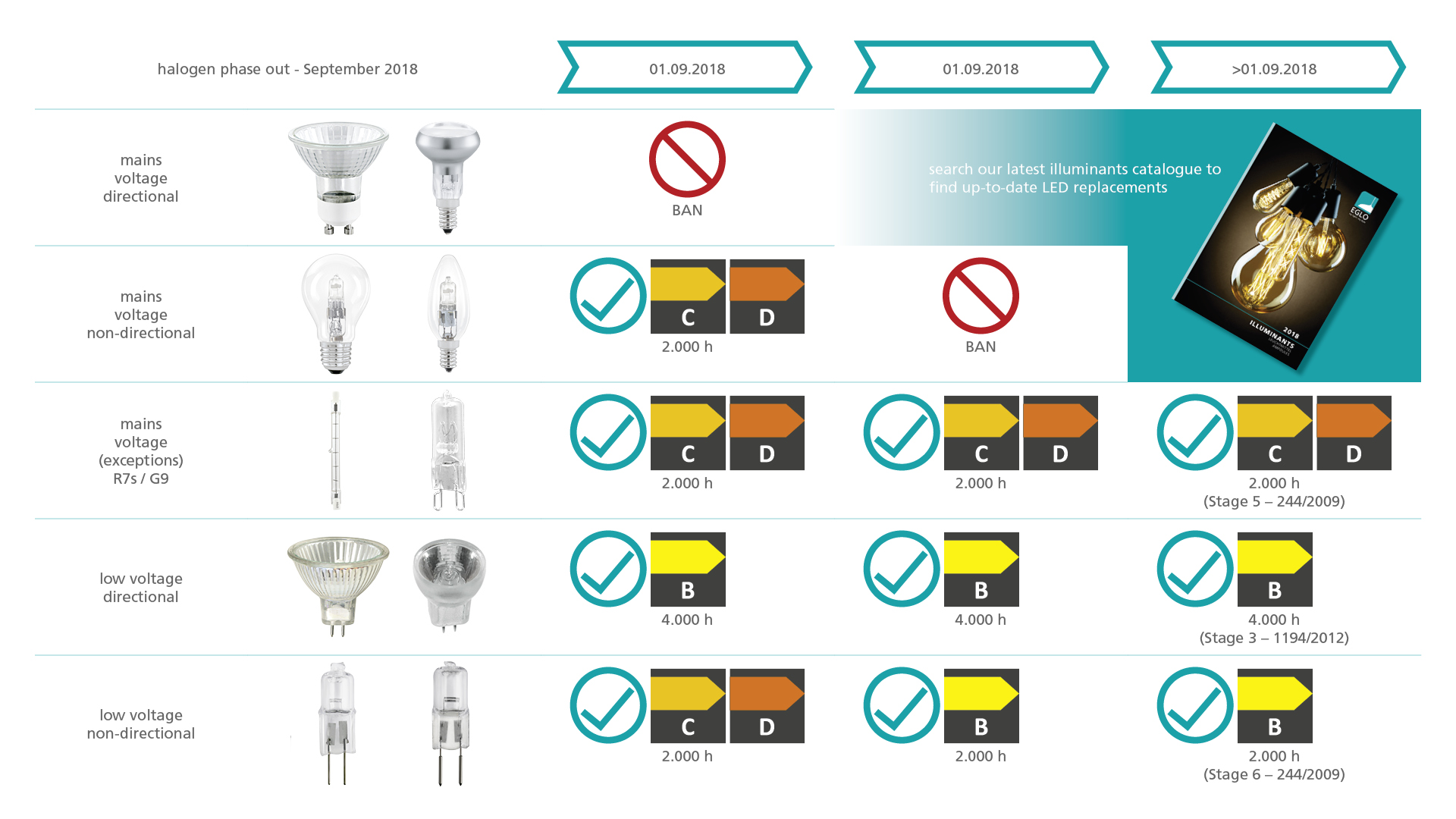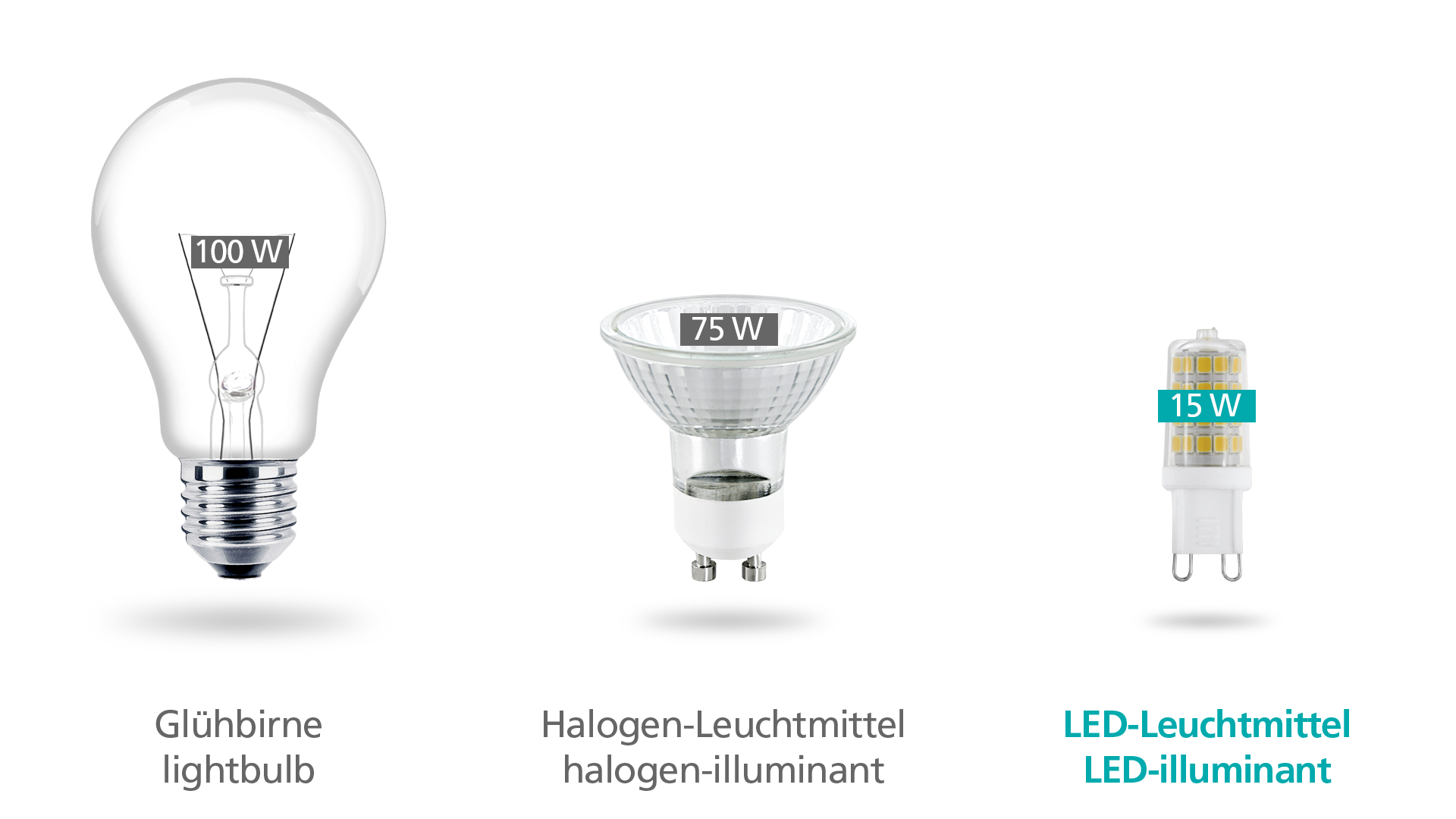Lights Out for Halogen Lamps
No More Halogen
Not all halogen lightbulbs are affected by this change, as only non-directional high-voltage halogen lamps are affected by the ban from September 1st, 2018. High-voltage means these illuminants are operated directly with a mains voltage of 230V. From September 1st, 2018, the production and import of high-voltage halogen lamps will be discontinued:
- On one hand, those with classic E14 and E27 screw bases (non-directional light)
- Directional high-voltage halogen lamps have been banned since September 1st, 2016, which applies above all to halogen lamps with GU10 bases.
Exceptions to the above rule are halogen lamps with R7 bases or G9 pin bases in the high-voltage range. These can continue to be produced and marketed with an energy efficiency class of C or D.
For low-voltage halogen lights, the mains voltage is regulated downwards by a transformer. Instead of 230V operating voltage, you usually have 12V or 24V to operate the lights. They are more durable than high-voltage lights and also have a higher light output. In the EU, we have tightened the criteria for omnidirectional halogen lights from September 1st, 2018. In addition to other criteria, these must now be at least energy efficiency class 'B'. Examples of low-voltage halogen lamps are G9 pin base. Directional low-voltage halogen lights have had to meet the stricter criteria of the EU since September 1st, 2016, which have to achieve at least 'B' energy efficiency class since that date.
Halogen lighting for special areas of application such as lighting components in ovens is an exception to the rule.
Why all the magic?
In terms of energy efficiency, the EU decision was the right one. This becomes clearer when we look at how much energy the various light sources actually use. For instance, the 100W lightbulb. To achieve the same lighting for an area, you need a 75W halogen lightbulb and a 15W LED lamp. Good for the environment and your wallet.
LED is the Future
Are you unsure and don't know whether you need new light sources for your lamp? The EU legislation regulates the distribution of the lamps, not their use. In other words, if an older halogen lightbulb breaks, you would get an energy efficiency LED illuminant.
What do you have to pay attention to when buying a lighting product?
- Pay attention to the product name. Old residual halogen items are still being sold, but our LED lightbulbs are marked as such, so you can't go wrong here.
- If your lighting colour is important to you, you should make note of what is on the packaging. Light colour is clearly stated on LED products; 2200K to 3000K ensures warm white light, 4000K ensures neutral white light and 5000K produces cold white light.
- Do you use a dimmer switch? If dimmable lights are important to you, make sure that your light source is clearly marked as dimmable. Not every LED light source works with every dimmer, so you should check compatibility. On our website, you will find compatible dimmers for our light sources in the European market.
OK, so now you know all about the issues with halogen lightbulbs and why LED components are so important and beneficial. Get inspired for your new LED light and browse our extensive range.
















































